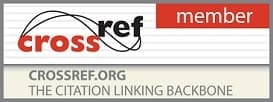- Printed Journal
- Indexed Journal
- Refereed Journal
- Peer Reviewed Journal
P-ISSN: 2394-1685 | E-ISSN: 2394-1693 | CODEN: IJPEJB
Impact Factor (RJIF): 5.38
2022, Vol. 9, Issue 1, Part B
Relationship between kinematic parameters of standing throw and ball velocity of female handball players
Author(s): Sharmin Akhtar and Dibendu Kr. Bej
Abstract:
Purpose: The standing throw is the most applied throwing technique in team handball (Wagner et al., 2008); therefore, the purpose of our study was: to establish the relationships between kinematic parameters and ball velocity at release (shooting performance), a key performance factor.
Methods: Overall, 10 junior female state level (west Bengal) players from the Guskara College handball coaching camp were analyzed by using two standard camcorders. Ball velocity was assessed in standing throw (St) from 7 m penalty spot. Kinovea 0.8.27 motion analysis software was used to access the kinematic data. IBM SPSS Statistics 25 was used for statistical calculation. Pearson correlation coefficient was used to determine the correlation between variables. The level of Significance was set at p<0.05.
Results: A high degree linear positive association has been found in stride length (r = 0.665*), relative Centre of Gravity height at ball release (r = 0.701*), angle of knee joint of the front foot (r = 0.655*), and the hip angle at ball release (r = 0.714*) with the initial ball velocity of standing throw. Whereas a negative association has been observed in the following parameters i.e., ball holding duration, the relative height of the ball at release, and Angle of wrist joint at ball release. Elite level junior female handball players show an average ball velocity i.e., 12.75 m/s with a flexed hip joint where the observed mean hip angle was 143.40. The relative C of G height (mean 94.02 ± 5.59 cm) from the ground at ball release has a great impact on initial ball velocity that ultimately results in throwing performance in handball. Due to the high release point, a negative association was found with throwing performance. For greater ball speed an athlete requires a hyperextended wrist angle with a moderate ball holding time, prior to releasing too much swing of ball throwing arm or too less swing leads negatively to the throwing performance.
Conclusions: The initial ball velocity was the most important in handball shooting performance in which players need to be using the best angles during the performance, particularly the elbow, hip, knee, and wrist joint angle. On the other hand, the body’s C of G height at release, stride length, and maximum release height of the ball should have a positive impact and association to achieve the best result from the game.
DOI: 10.22271/kheljournal.2022.v9.i1b.2344
Pages: 88-93 | 576 Views 154 Downloads
Download Full Article: Click Here
How to cite this article:
Sharmin Akhtar, Dibendu Kr. Bej. Relationship between kinematic parameters of standing throw and ball velocity of female handball players. Int J Phys Educ Sports Health 2022;9(1):88-93. DOI: https://doi.org/10.22271/kheljournal.2022.v9.i1b.2344








 Research Journals
Research Journals